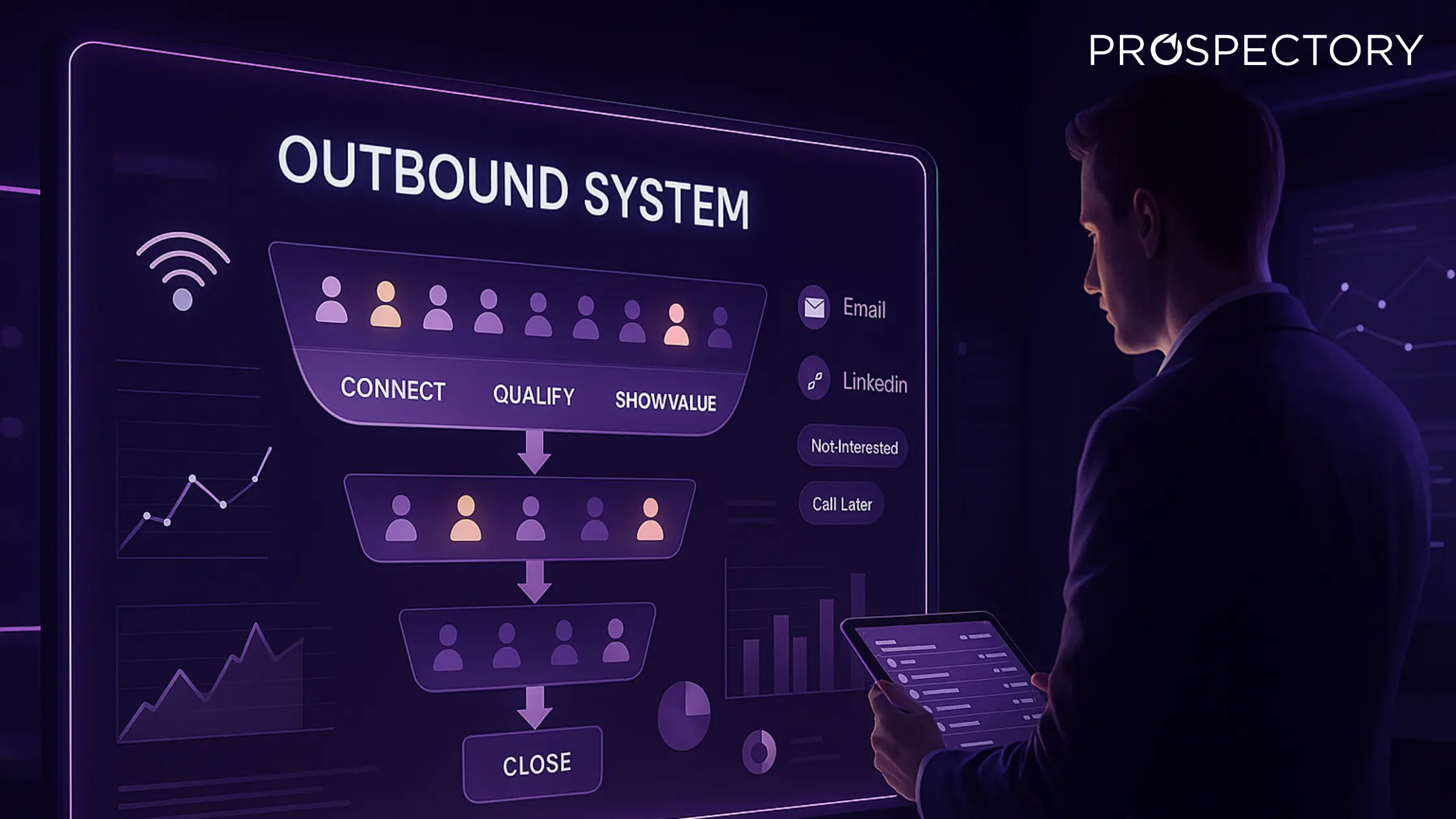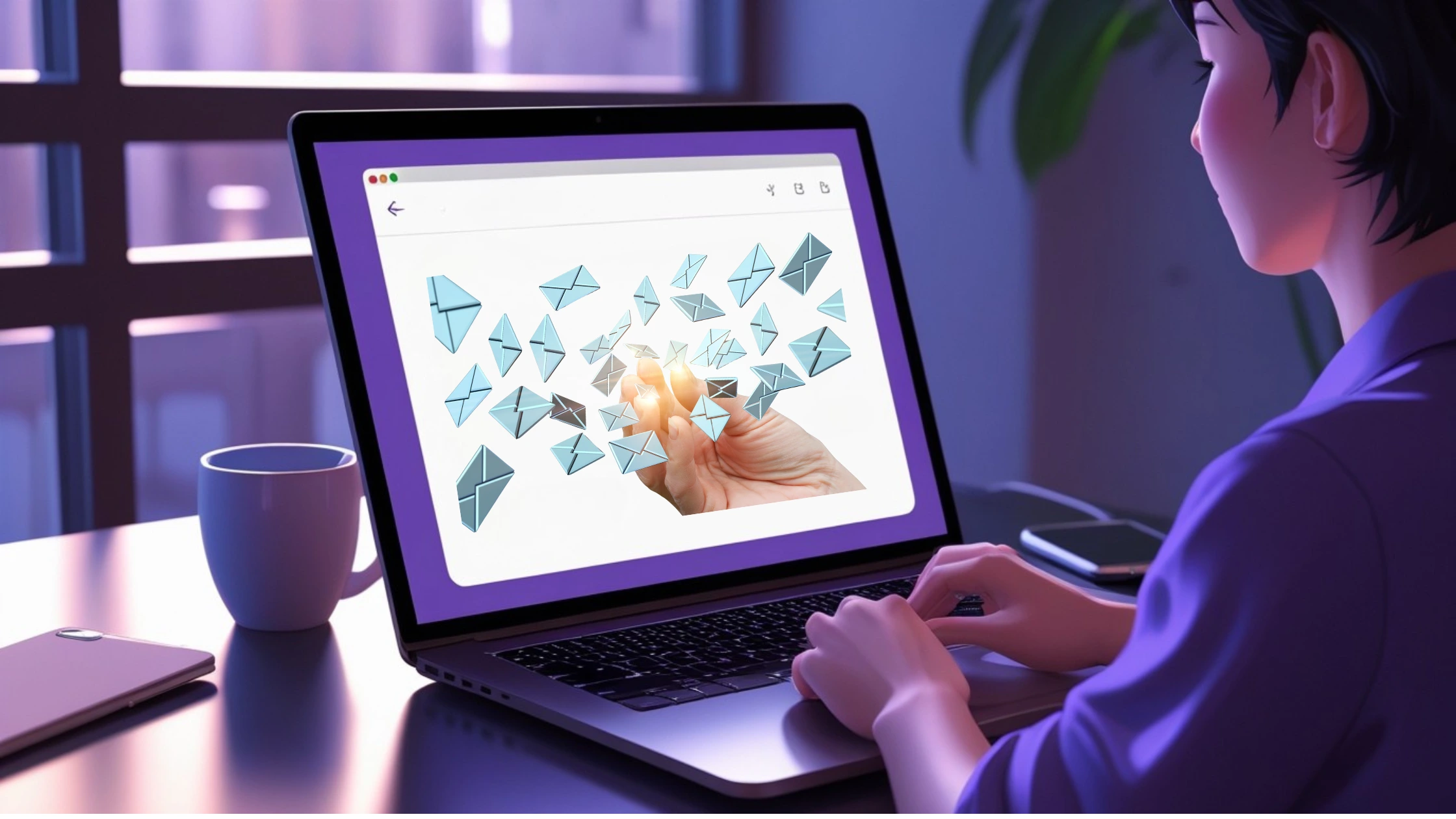Post Event Follow Up Best Practices, Best Tools for Post-Event Connection Follow-Up

Networking at in-person events like AWS re:Invent opens doors to potential clients and partners, providing face-to-face opportunities to showcase your product’s unique value prop. As every good sales person knows, that initial connection is only the spark, you have to follow up to deepen the relationships, particularly after events, to set your relationship on fire.
Using tools for post-event connection follow-up turn that interest into a sale. Below are seven strategies to help you stay memorable and build rapport with prospects after the event.
But before we get into how to build that rapport, let’s talk about segmenting that audience of those who expressed interest.
Before you go to the event, define your ICPs 1, 2, 3, 4. Figure out who you want to talk to so you’re not just throwing spaghetti against the wall. Research them, figure out what you want to say to each different ICP while at the event, how you’ll reach out after, and what success looks like.
Next, assign resources within your organization to each ICP and communicate what the follow-up process should look like.
Ex. Once the lead comes through your system, you must follow-up within 24hrs. A follow-up sequence looks like this - Email, phone call, email, etc. This is the messaging for ICP 1,2,3,and 4. Success looks like this. ICP 1 = visit, ICP 2= demo call, ICP 3 = attends this web event or downloads this whitepaper.
You'll also want to make sure there are enough options to send people to, so work with your content team asap to get multiple types of materials ready.
Best Post Event Follow Up Practices
Personalized Follow-Up Emails with Value-Added Content
Sending a timely, personalized email follow-up within 24–48 hours after meeting a prospect can make a powerful impression. In your email, reference something specific you discussed, such as their role in DevOps, challenges they face with AI integrations, or a shared insight about cloud scalability. Including details that highlight your conversation helps remind them why they showed interest in your product.
Tips for Value-Added Follow-Ups:
- Resourceful Content: Don’t stop at just a thank-you note. Stand out by sharing exclusive content, like a whitepaper, case study, or relevant article that relates to the contact’s area of interest. For example, if they expressed concerns about cloud security, a case study on how your product enhances security protocols could demonstrate the direct value of your solution.
- Invite to a Demo or Consultation: If the lead showed strong interest in your product, include a link for them to schedule a personalized demo. Keep the follow-up between you and the prospect, as this personal connection can foster a sense of trust and continuity. Emphasize that you’re available to show how the product directly addresses their unique goals or challenges.
This approach transforms your follow-up email into a resource they’re likely to read and engage with, keeping your brand memorable in the days after the event.
Automated Yet Personalized Drip Campaigns
Automated follow-ups are a great way to nurture leads without being overly time-consuming, but personalization is key to making these emails resonate. Segment contacts by tagging them in your CRM based on their specific interests—such as infrastructure, AI/ML, or DevOps—so that the content speaks directly to their needs and doesn’t feel like a one-size-fits-all approach.
Key Elements of a Successful Drip Campaign:
- Segmented by Interest Level or Use Case: For each segment, create an email series that addresses their unique needs and challenges. For instance, if they’re interested in DevOps, the sequence might include success stories from similar industries, case studies on streamlined deployments, and testimonials from satisfied customers in DevOps.
- Timed Cadence: Send around 3–4 emails over the span of two weeks, combining educational content with actionable offers. Alternate between emails sharing useful insights and others with strong calls-to-action, like scheduling a meeting or signing up for a webinar.
- Interactive Elements: Encourage engagement by including quick surveys, polls, or buttons that prompt feedback. For instance, a “Let us know more about your goals” button or a poll asking “What’s your biggest challenge with cloud scalability?” can provide insights that help guide future interactions with each prospect.
This mix of automation and personalization keeps your brand top-of-mind while nurturing interest in a way that feels relevant and customer-focused.
Social Media Engagement on LinkedIn and X (Formally known as Twitter)
In-person events are perfect for establishing an initial connection, but digital touchpoints can help solidify these relationships. After AWS re:Invent, connect with each prospect on LinkedIn with a short message, referencing a memorable part of your conversation to keep the context fresh. This not only helps the prospect remember you but also builds your professional network.
Ways to Maintain Engagement:
- LinkedIn Connections: Craft a friendly, specific message, such as, “Hi [Name], it was great meeting you at AWS re:Invent and discussing cloud scalability for DevOps. Let’s stay connected!” This personalized message makes the LinkedIn connection feel more intentional and less transactional.
- Engage on X: Follow prospects and engage with their content. Share highlights from AWS re:Invent and tag relevant contacts who might appreciate the insights. Use event-related hashtags to maximize visibility within the community, demonstrating your active participation.
- Re-share Relevant Content: If you have blog posts, whitepapers, or video clips from the event, share these on LinkedIn or X, tagging people with specific interests based on past conversations. This helps keep your brand on their radar in a non-intrusive way.
By staying active on LinkedIn and X, you reinforce the connection and keep your product top of mind as they move from event conversations to post-event decision-making.
Customized Post-Event Webinar or AMA (Ask Me Anything)
Hosting a targeted webinar or AMA session post-event is an excellent way to keep leads engaged while showcasing your expertise in a more in-depth format. Use insights from your booth interactions to select topics that resonate, like in-depth integration possibilities or case studies relevant to AWS solutions.
Tips for Maximizing Webinar Engagement:
- Topic Selection: Choose a high-interest topic based on event conversations. For instance, if there was a lot of interest in AWS integration capabilities, consider a webinar on optimizing these integrations for scalability and performance.
- Personalized Invitations: Send invites directly to those who expressed interest, noting the chance for them to ask specific questions. A tailored invitation makes attendees feel that their input and needs are valued, increasing attendance likelihood.
- Post-Event Repurposing: After the webinar, repurpose highlights by creating shorter video clips or insights for social sharing. Tag prospects who showed specific interest in those aspects to reignite the conversation in a helpful, targeted way.
This approach extends the value of your event and gives prospects another touchpoint to learn about your product’s benefits.
Direct-Message Follow-Up with Customized Offers
Personalized messages with tailored offers are particularly effective for high-priority leads. Craft a message that builds on your in-person conversation and provides exclusive benefits, such as a discount or an extended free trial.
Top Strategies for Customized Offers:
- Special Discount or Free Trial: Extend a limited-time offer, such as a month of free access or a special discount, to encourage them to experience the product firsthand. This exclusive offer can be the nudge they need to start a trial.
- One-to-One Sessions for High-Potential Leads: For prospects with significant buying power, offer a 15-minute personalized session to address any specific questions. For VIP prospects, consider offering a more in-depth white-glove onboarding experience to guide them through initial setup and ensure they feel supported.
These personalized messages can turn casual interest into actionable steps toward adopting your solution.
Targeted Retargeting Ads on LinkedIn or Google Ads
Retargeting ads are another effective way to re-engage contacts after the event. By setting up ads that are specifically targeted to attendees who visited your booth, you can reinforce your brand’s presence with content they can explore on their own time.
Retargeting Techniques That Work:
- Custom Audience Ads: Using LinkedIn or Google Ads, set up campaigns targeting prospects based on their conversations with you. Use CRM data to create segments, showcasing content related to those segments, such as case studies or technical solutions in cloud infrastructure.
- Video Testimonials or Case Studies: For these ads, showcase short, engaging content that highlights success stories or testimonials relevant to AWS clients. Such ads can prompt prospects to think, “That could be us!” and encourage them to take the next step.
This subtle, ongoing brand visibility keeps you top-of-mind, especially if they are comparing options post-event.
Mailing Personal Thank-You Notes or Small Gifts
In a digital-first industry, sending a handwritten thank-you note or small gift can make a lasting impression. A personal note shows thoughtfulness, demonstrating that you remember your conversation and genuinely appreciate their interest.
Thoughtful Gift Ideas:
- Handwritten Notes: Sending a thank-you card is a simple yet memorable gesture. Reference a detail from your conversation to make it personal.
- Relevant Books or Resources: If you discussed a particular book, tool, or resource, send it along with a note. This unexpected gesture reinforces your attention to detail and builds goodwill.
For high-value contacts, these unique, personalized touches help your brand stand out from the many digital-only follow-ups they might receive.
Conclusion: Best Event Follow Up
Effective follow-up is a blend of timely communication, added value, and personalization. By combining targeted emails, social media engagement, and personalized offers, you can transform event conversations into meaningful, long-term business relationships. Each follow-up method outlined here—from LinkedIn connections to handwritten notes—reinforces your brand and shows prospects that you are invested in their success. With these strategies, you’re set to build stronger connections and turn event leads into loyal customers.
FAQ: Event Follow Up
How do I write a follow-up email after an event?
Start with a thank-you - either for attending or for their time at the event. Mention something specific to make it personal (a session you both attended, a conversation you had). Then, clearly state your reason for following up, like continuing the conversation, sharing resources, or setting up a meeting.
What is the proper way to follow up after meeting someone at an event?
Be prompt (within 1–3 days), keep it short, and remind them who you are and where you met. Then, mention any next steps or a reason to stay in touch. Always be polite and clear but no pressure.
How do I politely ask for a follow-up meeting after an event?
Say something like:
"It was great connecting with you at [event name]. I’d love to continue our conversation - would you be open to a quick call next week?"
How do you follow up without sounding pushy?
Keep your tone friendly and light. Use phrases like:
"Just checking in when you have a moment" or
"Following up in case this slipped through — no rush at all."
How do I remind someone about a conversation we had at an event?
Try:
"Hi [Name], I really enjoyed our chat at [event name] about [topic]. I wanted to follow up and see if you'd be open to continuing that conversation."

Related Blogs
%20(1).webp)
.webp)
.webp)








